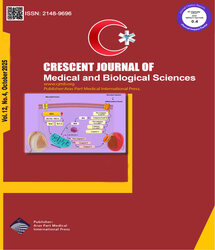
| Original Article | |
| Medical and Biomedical Information Research System Model: Emphasizing the User’s Point of View | |
| Nahid Ramezan Ghorbani1, Maryam Ahmadi2, Farahnaz Sadoughi2, Rosemarie Noot Heidari1 | |
| 1Department of Development and Cooperation of Information and Scientific Publications, Undersecretary for Research and Technology, Ministry of Health and Medical Education, Tehran, Iran 2Department of Health Information Management, School of Health Management and Information Sciences, Iran University of Medical Sciences, Tehran, Iran |
|
|
CJMB 2016; 3: 091-096 Viewed : 6011 times Downloaded : 3242 times. Keywords : Research information system, Medical informatics, Biomedical information, User-computer interface, Iran |
|
| Full Text(PDF) | Related Articles | |
| Abstract | |
Objective: In order to increase investment in medical and biomedical research particularly in developing countries the need for visibility of research outputs is very important since this would lead to more investments and more researches within the country. Medical and biomedical research information system utilizes computers and communication equipments that allow collection, storage, processing, exploitation and dissemination of research information in Medical and biomedical field. One of the most important success criteria for an information system are the users’ comments, therefore, this study is aimed to investigate the users views regarding the medical and biomedical research information system in the country. Materials and Methods: This is a comparative descriptive study in which the proposed model for the national information research system in the domain of medical and biomedical was initially prepared basing on comparison then the applicability of the model to meet users’ needs was presented for final evaluation in the form of a survey to 40 users which were selected based on convenience sampling. A questionnaire was the tool used for gathering the data. The reliability and validity of the questionnaire was approved by a Cronbach alpha reliability of 94%. Descriptive statistic was used for data analysis. Results: Results of the survey conducted on users indicated that all of the participants with the majority of items and categories presented in a designated five axes had a unanimous consensus and no item has been opposed. Also, cases such as the presence of educational system, researchers’ evaluation system, automatic identification of research priorities and the process of integrating research outputs into industry were taken into consideration. Conclusion: For the success of the system, all stakeholders involved in medical and biomedical research must coordinate in determining priorities, creating health research networking and in strengthening the overall capacity of the network and in collecting the baseline data. Assessment of tools and the stages of research implementation with corporate and national supervision, must comply with international scientific and ethical standards. |
Cite By, Google Scholar
Google Scholar
PubMed
Online Submission System
 CJMB ENDNOTE ® Style
CJMB ENDNOTE ® Style
 Tutorials
Tutorials
 Publication Charge
Medical and Biological Research Center
About Journal
Publication Charge
Medical and Biological Research Center
About Journal
Aras Part Medical International Press Editor-in-Chief
Arash Khaki
Deputy Editor
Zafer Akan

















